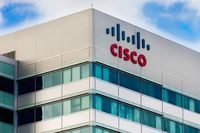Cisco Systems, Inc. (NASDAQ:CSCO), a technology stalwart long associated with the backbone of global networking, has once again found itself at the heart of Wall Street debate. As the company rides the shifting tides of artificial intelligence (AI) demand and market volatility, investors and analysts are asking: is Cisco’s current position a golden opportunity or a signal to proceed with caution?
On August 5, 2025, UBS maintained its Neutral rating on Cisco but nudged its price target up to $74, representing a 10% potential upside. The move, according to UBS, was prompted by rising demand in campus and data center segments, which could translate into an earnings beat for the fourth quarter. That optimism was not unfounded—Cisco’s Q4 FY 2025 revenue, ending July 30, reached $14.67 billion, marking an 8% year-over-year climb. For the full fiscal year, revenue hit $56.65 billion, a respectable 5.3% increase from FY 2024, as reported by Insider Monkey.
But headline numbers only tell part of the story. Cisco’s AI infrastructure orders from web-scale customers soared past $2 billion for fiscal 2025, doubling internal projections. CEO Chuck Robbins credited this surge to innovation and strong execution, stating that Cisco is "positioned to lead the AI era through a shift in infrastructure architecture." The company’s Q4 non-GAAP earnings per share (EPS) came in at $0.99, besting analysts’ estimates of $0.977, while full-year EPS rose modestly to $3.81—a 2.1% uptick.
Looking ahead, Cisco projects fiscal 2026 revenue between $59 billion and $60 billion, with EPS targeted at $4.06. CFO Mark Patterson emphasized the company’s focus on “strategic investments and profitable growth,” even as tariff impacts and global uncertainties loom.
Yet, despite these robust figures, Cisco’s stock price has not been immune to turbulence. According to AInvest, the company’s Q2 2025 earnings, though positive, failed to ignite investor enthusiasm. Revenue grew 9% year-over-year to $14.0 billion, and non-GAAP EPS rose 8% to $0.94. However, the market had hoped for more, especially in AI infrastructure, where first-half orders totaled $700 million—short of the $1 billion target. This perceived shortfall, coupled with guidance for Q3 that merely met expectations ($13.9–14.1 billion), led to a 1% dip in the stock. By August 14, Cisco shares closed at $70.40, and as of August 15, they had slipped to $66.07, down 4.47% for the week.
Insider and institutional activity has added another layer of complexity. Over the past six months, top executives—including CEO Chuck Robbins and CFO Richard Herren—have sold shares. Major institutional investors like Dodge & Cox and Goldman Sachs reduced their holdings by 97% and 29%, respectively. Even congressional members joined the exodus, selling up to $100,000 in Cisco stock during the same period. As TipRanks notes, corporate insider sentiment is currently negative, with 99 insiders increasing their share sales in the last quarter.
Still, not all signals point to trouble. Brandon Nispel from KeyBanc, in a report released August 15, maintained a Buy rating on Cisco, while Rosenblatt Securities echoed this sentiment with a bullish $87 price target on August 8. The broader analyst consensus, according to TipRanks, is a Moderate Buy, with an average price target of $73.43—suggesting a 4.3% upside from current levels. The stock’s one-year high stands at $72.55, with a low of $47.85, and average daily trading volume hovers around 20.44 million shares.
So, what’s driving both the optimism and the caution? The answer lies in Cisco’s AI infrastructure ambitions. The company’s AI segment is its most promising engine of growth. Fiscal 2025 saw $2 billion in AI infrastructure orders, with $1.25 billion secured in Q4 alone—$250 million above internal targets. Three of Cisco’s top six web-scale clients posted triple-digit order growth, fueled by demand for silicon-based solutions like the Silicon One G200 chip and 800G Nexus switches. Strategic partnerships with industry giants such as NVIDIA, Microsoft, and Saudi Arabia’s HUMAIN AI company are broadening Cisco’s reach into sovereign and commercial AI data centers.
However, translating these orders into concrete revenue is no small feat. Hyperscaler deals can be unpredictable, and as CEO Robbins has pointed out, enterprise AI adoption is still in the early innings. While Cisco’s $2 billion in AI infrastructure revenue is impressive, it’s a mere drop in the bucket compared to the $300 billion hyperscaler data center market. Meanwhile, competitors like Huawei, Ciena, and Nokia are aggressively investing in optical networking, intensifying the battle for market dominance.
Financially, Cisco remains on solid ground. For FY 2025, gross margins improved to 65.6%, and research and development spending climbed 9% to $2.4 billion, as highlighted by AInvest. The company’s vertical integration strategy—melding network-level AI with application-layer tools such as Webex—creates a compelling value proposition. Its subscription model and recurring revenue streams offer a cushion against sector volatility.
Yet, the company’s valuation raises eyebrows. Cisco currently trades at a forward price-to-earnings (P/E) ratio of 17.79 and a price/earnings-to-growth (PEG) ratio of 3.26—both higher than peers like Arista Networks and Hewlett Packard. This premium suggests investors are banking on rapid AI-fueled growth, but it also signals risk if that growth fails to materialize. HSBC’s Stephen Bersey, for instance, has downgraded the stock to “Hold,” citing concerns about demand sustainability and margin pressures from the ongoing shift to a subscription-based model.
Geopolitical risks also loom large. Tariffs on goods from China and Mexico could squeeze margins, and the integration of recent acquisitions, such as Splunk, brings its own set of challenges. Nonetheless, Cisco’s ambitions are clear: management aims to capture 10–15% of the $500 billion AI market by 2027, a target that, if achieved, could transform the company’s growth trajectory.
For investors, the question is whether to view Cisco’s recent pullback as a buying opportunity or a warning flag. The company’s strong balance sheet, recurring revenues, and strategic positioning in AI make it an attractive long-term bet for those willing to stomach short-term volatility. As AInvest puts it, "the pullback could prove to be a strategic entry point in a company poised to shape the future of networking and AI." Yet, caution is warranted: a PEG ratio of 3.26 means the market has already priced in a lot of optimism. If Cisco can accelerate its AI revenue and maintain execution, a 20–30% upside is plausible. But if growth stumbles, a correction could be in the cards.
In the end, Cisco’s journey through the AI era is a balancing act between risk and reward. The coming quarters will reveal whether the company can turn its bold bets into lasting gains, or if the skeptics’ caution will prove prescient.






